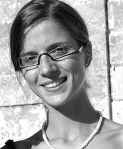
View toward the Abbey of Saint Antoine in the Isère region, one of the sites studied by John Robbins in 1990.
We are pleased to annonce a new title in the digital library of RMHP Fellows’ and Scholars’ Final Reports, thanks to the generous support of the Sondra & Charles Gilman, Jr. Foundation.
John Robbins, the First American RMHP Fellow
In 1990, the first Richard Morris Hunt Prize laureate wrote “the traditions for the historic sites and monuments are different in France than in the United States. In France they are mainly works of art and architecture; in the United States, they are principally monuments of political and social history. A subtle but important difference. Both American and French preservationists have a lot to offer and the exchange made possible by the RMHP is an excellent beginning”. What foresight, John.
That was almost 30 years ago! There are now 33 laureates. What human wealth, friendships made, professional enrichment and progress. The research projects undertaken by the laureates are more and more concerneed with the problems of tomorrow’s architecture. Each year brings new possibilities, an aid to the profession, illustrating the RMHP motto: “Innovate to preserve”.
— Michèle le Menestrel Ullrich, RMHP Founder
Click here to access the RMHP Final Reports Collection
 John Robbins is Deputy Administrator at the National Gallery of Art in Washington, D.C. He was first trained as an architect at the University of Virginia, and later worked for the National Park Service. This year, John was elected to the ICCROM executive committee. To learn about his career and ICCROM nomination, follow this link.
John Robbins is Deputy Administrator at the National Gallery of Art in Washington, D.C. He was first trained as an architect at the University of Virginia, and later worked for the National Park Service. This year, John was elected to the ICCROM executive committee. To learn about his career and ICCROM nomination, follow this link.
 In Paris, Elsa Ricaud, 2012 RMHP Fellow and expert in raw-earth construction materials, participated in the École de Chaillot’s 10thannual Journée d’étude on May 17, 2019, revealing some of the secrets surrounding historic uses of the materiel, whether in its raw or kiln-fired form.
In Paris, Elsa Ricaud, 2012 RMHP Fellow and expert in raw-earth construction materials, participated in the École de Chaillot’s 10thannual Journée d’étude on May 17, 2019, revealing some of the secrets surrounding historic uses of the materiel, whether in its raw or kiln-fired form.



